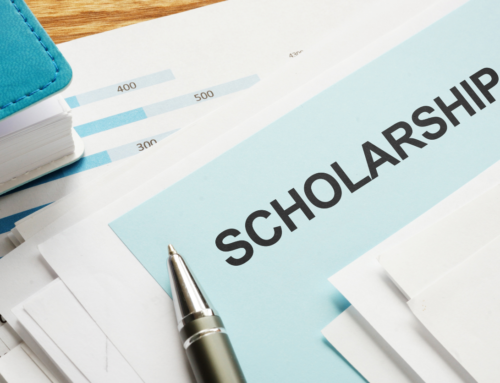Aspirations
Throughout their entire high school athletic career, scholar-athletes look for potential scholarship offers from their dream school. Eyeing that same slot and vying for that same scholarship are a thousand other athletes all over the country.
That being said, scholar-athletes must first be honest with themselves before even attempting to campaign for a scholarship. Coaches at all schools have their own recruiting process, and if an athlete is not even on their radar, they more than likely will not even glimpse the athlete’s way.
As unfortunate as it is, not all athletes have the same caliber, talent, skill, or personality. Thus, not every athlete will be able to be competitive in a Division I, which is where most athletes believe they should be on a full-ride scholarship.
A small fraction of athletes will win these scholarships. Still, there are options of partial Division I scholarships and Division II and Division III levels an athlete could take their skills in exchange for a college education.
If an athlete first is honest with themselves, a process can be developed for when and how an athlete could ask for a potential scholarship.
And, for starters, asking point-blank, cold-call style in an impersonal email is most certainly NOT the path to traverse. A coach will hit delete on that email before even finishing it, perhaps even before opening the email if it is from an address he does not recognize or was prompted to be on the lookout for.
The Process
During a game, an athlete needs a game plan and/or process for navigating the recruitment process to land a scholarship offer hopefully.
1. Honesty
As mentioned above, an athlete must first be honest with themselves. If an athlete always is told and believes that they are the greatest player, flawless in every way, and never have an ounce of realism, they are doomed to fail because they have a warped sense of perception. They believe they are entitled to a Division I offer. No one is entitled to anything, let alone the peak collegiate athletic offer.
2. Realistic
If an athlete can be honest with themselves, they can become realistic about their goals. Any scholarship offer is better than none, especially since scholarship offers realistically show the recruits worth to that particular coach. If an athlete begins to notice of a pattern of either full-ride or partial Division I offers, or none at all, the athlete needs to begin looking at all options available at all levels. A pragmatic athlete will recognize that perhaps they are not as talented as they believe or have been told.
3. Evaluation
After an athlete has gained a sense of realism, to further aid the athlete in their recruitment process, a third-party recruit evaluator and/or honest coach should be hired/entrusted to evaluate the recruit based upon the sports’ needs. This will further give the athlete some guidance on what level to search for schools and coaches to potentially contact realistically.
4. Research
An athlete should have been researching various schools and coaches before even starting the recruitment process, but now after being evaluated, the athlete can better home in on their potential schools at the appropriate level.
5. Contact
All schools and coaches have a recruitment process and potential contact. Even if an athlete emails a coach directly, that email will probably be filtered to an assistant of some sort to help manage the coach’s daily duties. Nevertheless, someone should contact the recruit in some way. However, if no one from the targeted school contacts the recruit, there are other ways for the recruit to contact the school through the use of third-party intermediaries. Either way, a recruit needs to get into contact with a target school before the scholarship process can continue
6. Relationship
If a recruit is successful in contacting a school and has exchanged a couple of emails that may have progressed to text messages and even further to phone calls, the athlete needs to keep in mind that the scholarship offer will not occur without first meeting in person. Unofficial and official campus visits will allow the athlete to meet coaching staff, tour facilities, and further develop the already budding relationship. These visits are where coaches decide if they feel the recruit will be a good fit for their program.
7. Question
Finally, after following the initial 6 steps of this guideline, an athlete should be able to gauge their relationship with a potential target school. If the relationship is solid, a recruit can ask about where the coach sees them fitting in with their program but should not ask directly. Instead, inquiring about roster availability and a coach’s timeline and philosophy will better show interest in being at the school. However, if the relationship is shaky, asking about a scholarship may be detrimental to the entire process. But that does not mean the athlete still cannot ask, they merely have to be more respectful and formal about the proposition than those with a more solid foundation of a relationship.
More Specifically When and How
An athlete may gauge when a relationship with a coach and school has developed to a rather stable point. However, if an athlete does not recognize the signs such as multiple visits have occurred, multiple emails and phone calls have been exchanged, and an overall easiness and comfort in being with the coach and facilities, an athlete can still ask after the initial contact.
An athlete should not cold call a coach as that is seen in ill-form and would not lead to a scholarship offer. An athlete should attempt to contact the coach or school recruit contact to be able to at least speak with the coach on the phone or in person. If a couple of interactions of emails, texts, and/or phone calls have occurred, but no visits were scheduled, an athlete can still inquire about the coach’s mind and where they see the athlete fitting in.
An athlete, no matter the relationship with the coach, should ask about the coach’s philosophy and values, the program’s philosophy and values (which may be similar or different in some key areas so as prestige or competitiveness), roster availability, scholarship funds, and/or availability for any financial assistance available for the team’s slot.
Furthermore, an offer from the coach will always come from either a phone call or an in-person discussion. Thus, an athlete should be cognizant of this and mirror the principle themselves. Instead of emailing or texting which is seen as impolite, a phone call or in-person discussion should be conducted to proposition the coach for scholarship details which is seen as respectful.
Lightning Guidelines
To Do
- Be honest and realistic
- Follow the coach’s/school’s recruitment procedure
- Research appropriate Division level schools
- Be respectful
- Be polite
- Ask about roster availability, scholarship funds, financial assistance, etc
- Develop a relationship with the coach/school
- Make a highlight video/reel of athletic performance and academic achievement
Not To Do
- Do not “cold call”
- Do not directly ask if the coach will gift the athlete with a scholarship
- Do not approach a recruiter and/or coach during/after an athletic tournament
- Do not dismiss an offer because the athlete feels they deserve more
- Do not schedule campus visits too far apart from one another (most coaches decide within a month of seeing the recruit)
- Do not ask about scholarships or financing at the beginning of the relationship (makes the athlete only seem interested in a scholarship rather than a program or coach)
Did you enjoy the article ‘When and How Is the Right Time to Ask About Athletic Scholarships?’? If so, check out more of our articles HERE.
Original article posted on stack.com




